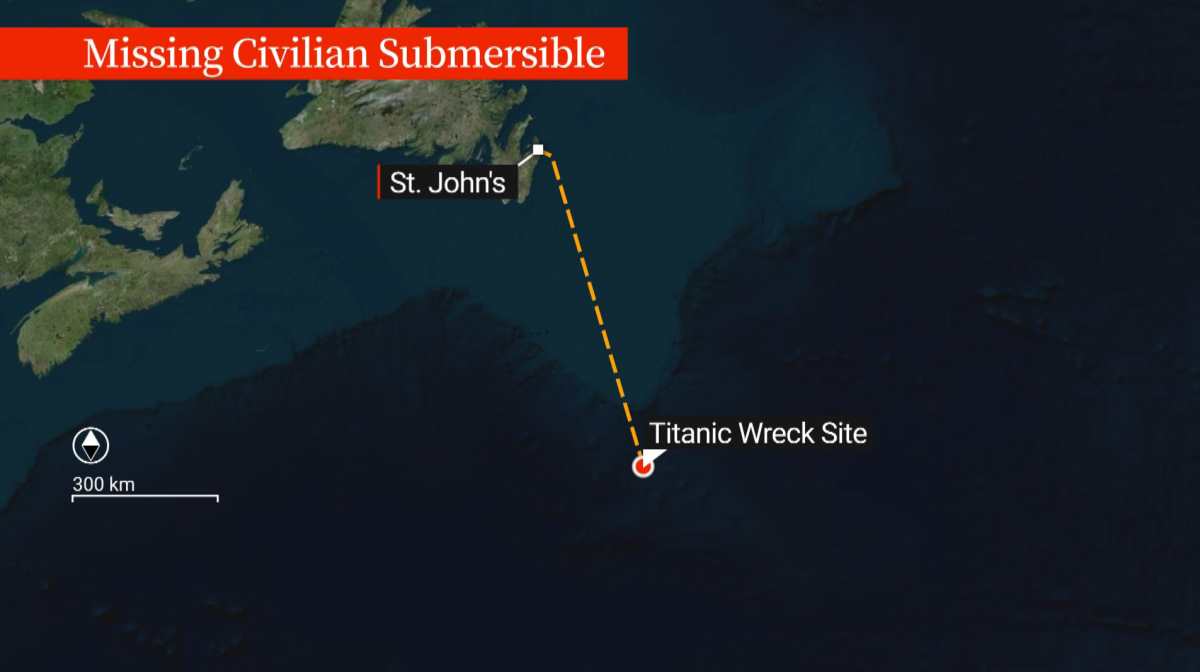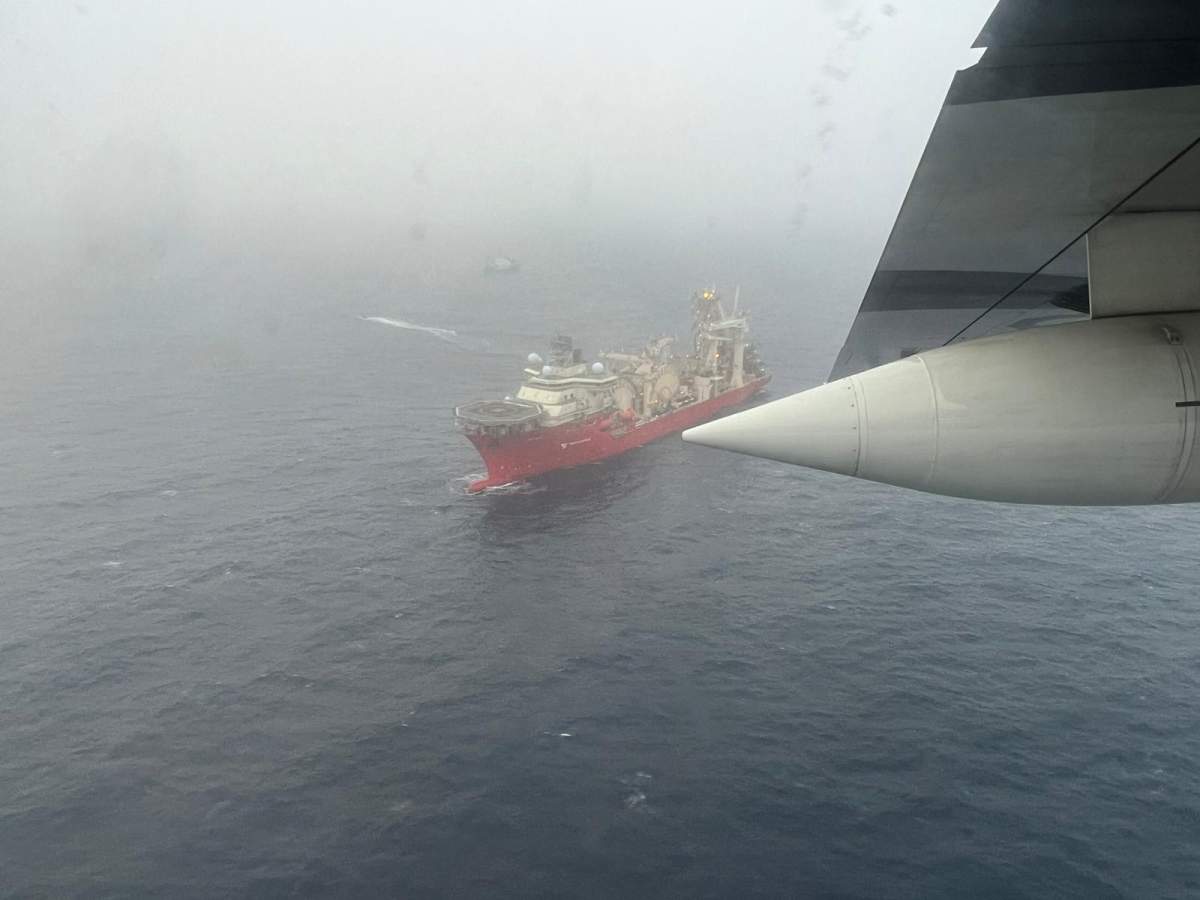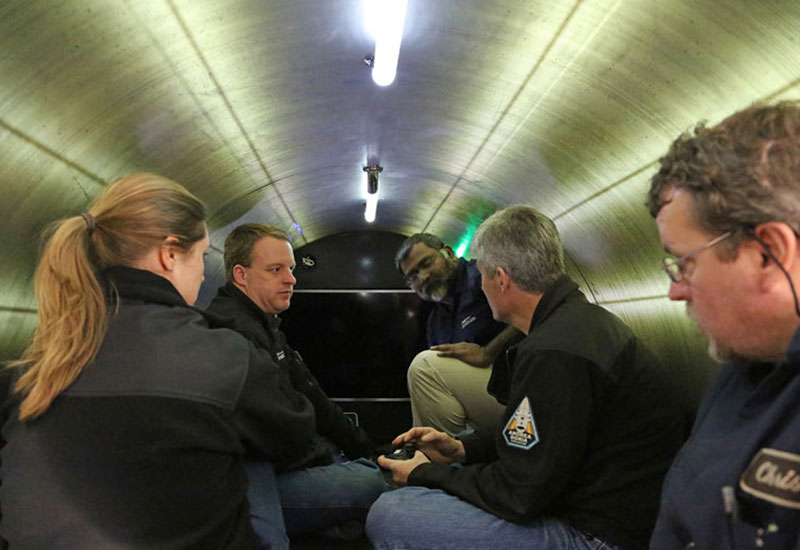The U.S. Coast Guard says the hunt for the missing Titan submersible is still a “search and rescue” mission with searchers detecting underwater noises both Tuesday and Wednesday.

Capt. Jamie Frederick told reporters in Boston Wednesday searchers have zeroed-in on the areas in the North Atlantic where the noises were detected, but could not offer specifics on what those noises were.
However, the revelation offered a glimmer of hope for those aboard OceanGate Expeditions’sub , as estimates suggest as little as a day’s worth of oxygen could be left if it is still properly functioning.
“This is a search and rescue mission, 100 per cent,” Frederick said.
Search efforts have yet to yield any positive results.
“We are smack dab in the middle of search and rescue and we’ll continue to put every available asset that we have in an effort to find the Titan and the crew members.”
At 12:18 a.m. Eastern on Wednesday, the U.S. Coast Guard had initially tweeted that a “Canadian P-3 aircraft” had detected underwater noises in the search area, which is now roughly two times the size of Connecticut – 13,023 square kilometres – Frederick said. The subsurface search is up to four kilometres deep.
Canada does not fly P-3 Orions but does use CP-140 Auroras, which are based on the Orion airframe with different avionics.

The Coast Guard’s statement on the noise detection came after Rolling Stone, citing what it described as internal U.S. Department of Homeland Security emails on the search, said that teams heard “banging sounds in the area every 30 minutes.”
In underwater disasters, a crew unable to communicate with the surface relies on banging on their submersible’s hull to be detected by sonar. Frederick said that data was still under expert analysis, and the noises were detected Tuesday night and again on Wednesday morning.
“We will continue to work as hard and as quickly as possible in an effort to locate them,” he added.
Canadian resources assisting in search
Defence Minister Anita Anand told reporters in Ottawa that HMCS Glace Bay, which has special medical personnel aboard, is heading to the search site.
“We are continuing to support the United States that is leading the search and recovery effort,” she said.

Get breaking National news
“At this point we are trying to do whatever we can to save lives.”
The U.S. Coast Guard said the Canadian Coast Guard ship John Cabot, which has side scanning sonar capabilities, is in the area conducting search patterns alongside ships Skandi Vinland and Atlantic Merlin.
The noise reports have sparked hope in some, including Richard Garriott de Cayeux, the president of The Explorers Club.
He wrote an open letter to his club’s adventurers, who include the missing British man and the Titanic expert aboard the Titan, that they had “much greater confidence” now after they spoke to officials in Congress, the U.S. military and the White House about the search.
Rescuers have been racing against the clock because even under the best of circumstances, the vessel could run out of oxygen by Thursday morning.

Roger Mallinson, who in 1973 was rescued alongside his diving partner after spending more than three days trapped 1,575 feet underwater in a six-foot-wide sub off the coast of Ireland, told Global News the Titan crew must try to communicate with rescuers on the surface.
“While you’re still down there, you’ve got to make sure that the people outside know you’re still alive,” the 85-year-old said.
“If we can get them to send a message, just to say they’re alive … there’s hope.”
Retired Vice-Adm. Mark Norman, former commander of the Royal Canadian Navy, told AM640 Toronto that with the clock ticking, the crew needs to maintain their warmth and slow their oxygen consumption.
AM640 is part of the Corus Entertainment radio network. Corus is the parent company of Global News.
“If in fact they are banging on the hull of the submersible … that will provide a mechanism by which the search crews can start to localize something because this is not an exact science,” he said.
“Of course, they need these robotic underwater vessels to do a more detailed search and then on top of that … we’ve got to actually get a lift capability attached to them and then bring them to the surface. This is a very complicated operation and time is certainly not on their side.”
Three C-17 transport planes from the U.S. military have been used to move commercial submersible and support equipment from Buffalo, N.Y., to St. John’s, N.L., to aid in the search, a spokesperson for U.S. Air Mobility Command said.

The Canadian military said it provided a patrol aircraft and two surface ships, including one that specializes in dive medicine. It also dropped sonar buoys to listen for any sounds from the Titan.
In addition to an international array of ships and planes, an underwater robot had started searching in the vicinity of the Titanic and there was a push to get salvage equipment to the scene in case the sub is found.
Frederick praised the international effort, and said more assets would be in the search area Thursday.
“We’re incredibly grateful for the full spectrum of international assistance that has been provided,” he said.
“Moreover, our Canadian partners have been providing critical leadership and significant response capabilities since the beginning of our efforts.”
Titan lost contact 700 km from St. John’s
Authorities first reported Titan overdue Sunday night, setting off the search in waters about 700 kilometers south of St. John’s. The submersible had a four-day oxygen supply when it put to sea around 6 a.m. Eastern, according to David Concannon, an adviser to OceanGate Expeditions, which oversaw the mission.
CBS News journalist David Pogue, who traveled to the Titanic aboard the Titan last year, said the vehicle uses two communication systems: text messages that go back and forth to a surface ship and safety pings that are emitted every 15 minutes to indicate that the sub is still working.
Both of those systems stopped about an hour and 45 minutes after the Titan submerged.
“There are only two things that could mean. Either they lost all power or the ship developed a hull breach and it imploded instantly. Both of those are devastatingly hopeless,” Pogue told CBC News Tuesday.
The submersible had seven backup systems to return to the surface, including sandbags and lead pipes that drop off and an inflatable balloon. One system is designed to work even if everyone aboard is unconscious, Pogue said.
Meanwhile, documents show that OceanGate had been warned there might be catastrophic safety problems posed by the way the experimental vessel was developed.
David Lochridge, OceanGate’s director of marine operations, said in a 2018 lawsuit that the company’s testing and certification was insufficient and would “subject passengers to potential extreme danger in an experimental submersible.”
The company insisted that Lochridge was “not an engineer and was not hired or asked to perform engineering services on the Titan.” The firm also says the vessel under development was a prototype, not the now-missing Titan.

The Marine Technology Society, which describes itself as “a professional group of ocean engineers, technologists, policy-makers, and educators,” also expressed concern that year in a letter to Rush, OceanGate’s chief executive.
The society said it was critical that the company submit its prototype to tests overseen by an expert third party before launching in order to safeguard passengers. The New York Times first reported about those documents.
— with files from Global News’ Redmond Shannon and The Associated Press












Comments